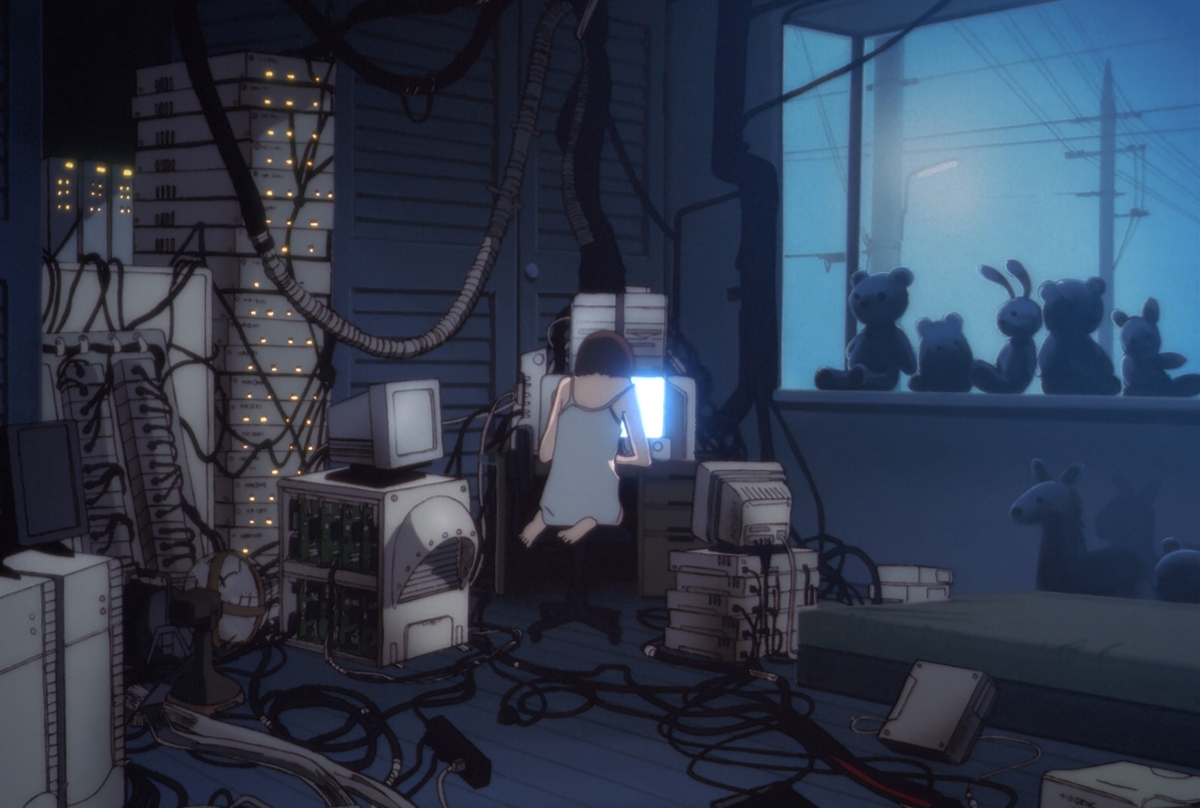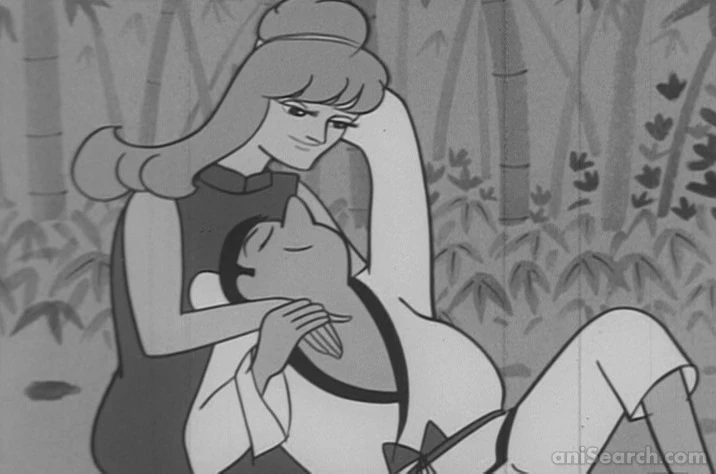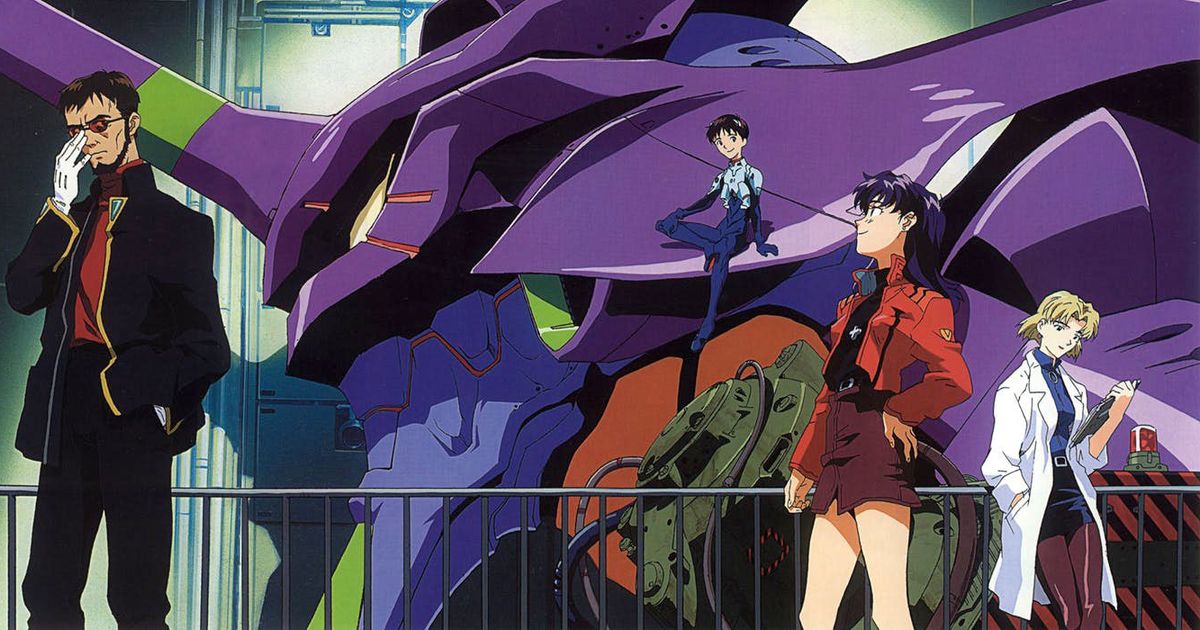Why Does Anime Air So Late At Night? | Otaku Culture Concepts Explained
Almost every month, I order a copy of the Japanese Anime magazine "Newtype." What can I say, I've got old man sensibilities. Twitter is great for keeping up to date on anime news, but I'll always enjoy flipping through an info magazine, even if I can't really understand most of the writing. Anyways, a neat feature of Newtype is that every issue has a schedule section for all of the anime and tokusatsu that will be airing in Japan that month. The more popular series such as PreCure, Sentai, and One Piece will even include summaries for the next couple of episodes. However, when you look through the schedules, you might start to notice something strange. My most recent issue was back from March 2021, so Non Non Biyori Nonstop and Horimiya were still airing. But those two shows had some strange air times listed. Non Non Biyori Nonstop aired at 1:35 in the morning? The popular rom-com Horimiya at 12:30am? Newtype is a pretty reputable source, and I didn't see anything online about incorrect air time listings, so what was the deal? Why were all these fairly popular anime airing while most people were sleeping?
Why Does Anime Air Late At Night?
When it comes to television, most households will have the TV on in the evening, after dinner and before bedtime. This premiere viewing period of time is known as "prime time," and by all means, as a producer, director, and TV show staff member, you want your show to air in this time slot. Prime time means more eyes on your show, more eyes on your show means more eyes on the ads that air around your show, and more eyes on the ads means, simply, extended job security for you. In the United States, prime time is between 8pm-11pm, while in Japan, this time slot is a close 7pm-11pm. On the opposite end of prime time is the graveyard slot. The graveyard slots are the time that most households are asleep, and therefore can't be subjected to TV ads, making it theoretically the least profitable time slot. Graveyard time starts at the end of prime time and ends when early morning programming starts, so in the United States, graveyard time is from 11pm to 5am, while it's 11pm to 4am in Japan. The graveyard slots are usually inhabited by either infomercials that take advantage of the cheap time slots or fringe media that can't be aired during the day because of content restrictions. However, late night anime (aka 深夜アニメ/Shinya Anime) has managed to thrive in the darkness, in spite of the fact that many anime that air in the grave don't even come close to bumping the borders set up by Japan's television content guidelines. So what's the deal? How are popular anime like Haikyuu able to air in the middle of the night and still remain profitable?
Unfortunately there aren't any accounts (available in English anyways) from producers or other anime staff members on the official reason why almost all anime airs in the middle of the night now. However, we can make assumptions based on the histories of anime production and television business to point to one likely suspect: cost reduction. In the late 90s, just around the same time that late night anime began to take off, a new, more financially safe form of financing anime was created. Originally, TV anime were either produced by the parent company of the animation studio, the animation studio itself, or the television network that commissioned the show. For most big shows, this was, and still is, a perfectly fine way to produce their shows. For example, the original Dragon Ball anime was produced and aired by Fuji TV, the broadcaster, and Toei Animation, the animation studio. However, for smaller studios, this method is a hell of a gamble. If the show does well, than massive profits are to be made. But if the show does poorly, as many anime do, than its possible that massive losses and maybe even bankruptcy are in store. So in the late 90s, a new production method came to be. The new method, known as the production committee method, makes certain studio death less likely by splitting the financial burden among multiple different companies. For example, My Hero Academia Season 2 was a joint production effort between Toho, Yomiuri Television Enterprise, Shueisha, Bones, Dentsu, Sony Music, and Movic. Because late night TV slots are cheaper than day time slots, and both late night anime and the production committee method were born at the same time, we can theorize that these cheaper time slots were suggested by these new anime production councils.
On the consumer side of things, of course we could assume that hardcore anime fans will stay up whatever hours necessary to catch the shows they want to watch. But what about the average folk? Of course, the MOST popular shows air at a decent timeslot. For example, One Piece has been holding down its Sunday 9:30am timeslot for a good while now. For everything else though, we might look to the popularity of DVD and Blu-ray recorders in Japan. The first DVD recorders were actually released in Japan in the late 90s, and their popularity never really waned. In 2006, demand for DVD recorders made up 80-90% of the DVD player market in Japan. And while nowadays, DVD players have fallen out of favor compared to the newer, sleeker Blu-ray recorders, the idea remains the same. Additionally, Japan has recently seen a large boom in internet streaming for anime. Of course, there's the global rise of services like Netflix, Amazon Prime, and even YouTube as distribution platforms, but anime specific streaming services such as Nico Nico Douga's streaming section and D-Anime Store have existed in Japan since the mid-200s. The culmination of these technologies have most likely lead to less of a demand from Japanese audiences to have their anime air at reasonable times.
The History of Late Night Anime
The history of late night anime actually starts at the same time as the rest of modern anime history: 1963. This was the year both Astro Boy and Gigantor began airing in (depending on where you watched TV in Japan) pre-prime time or prime time slots. However, another less family friendly anime began airing that same year at a notably later time slot. Hermit Village, an ero-gag anime base on the manga of the same name by one Kojima Kou, aired at 11:40pm, just barely putting it into an after hours slot. After it's ninth episode, it was moved to a 10:30pm tail-end-of-prime time slot, but with no other anime airing this late for another six years, it comfortably holds the title of the first late night anime. The next major notch in late night anime history would be struck in 1969, with the airing of Six Broken Laws at 11:10pm. Based on the novel "Introduction to Civil Code" by Sen Saga, this ero-comedy anime, in addition to being one of the earliest late night anime, was the first anime produced by an independent television studio. At this point, most anime was being funded by major television networks, so this was a huge achievement.
Throughout the 70s and 80s, anime stayed mostly in the daylight, with popular shows such as Dragon Ball and Mobile Suit Gundam airing during after school hours. The next late night anime wouldn't appear until 1986, with the anime adaptation of Watase Seizou's "Heart Cocktail" manga. Unlike the ero-gag series that had aired in the dead of night before it, Heart Cocktail was a romantic drama, featuring a strong jazz fusion soundtrack from Japanese jazz composer and pianist Matsuoka Naoya to fit the shows' sleek, moody atmosphere. Heart Cocktail would air at the latest time slot seen so far, holding down its 12:50am timeslot for all of its 78 episode run. In spite of Heart Cocktail's popularity, late night anime would return to its sleazy adult roots soon enough with the airing of the short hentai series Lemon Angel in 1987. As a spin-off of Cream Lemon, one of the oldest hentai series, Lemon Angel holds the distinction of both one of the earliest late night anime and the first hentai to be aired on television. 1989 would be a much tamer year by comparison, seeing the broadcasts of two new late night anime. Sakyo Komatsu's Anime Theater was a series of shorts based on the novels of the titular sci-fi author Sakyo Komatsu. Meanwhile, Youth's Dining Table was based on a manga about cooking with ready-made ingredients, such as frozen or canned foods. Even though you can watch Sakyo Komatsu's Anime Theater untranslated on YouTube, there's not much information about these works, as their source material (and in the case of Youth's Dining Table, other adaptations) are much more popular. However, they are important to note as early works that aired late at night.
The early 90s saw a few more more notable shows air late at night. The anime adaptation of the Legend of The Galactic Heroes novels, while originally released as a series of OVAs, actually received a late night broadcast in 1990. This legendary (and nowadays very VERY expensive) sci-fi series, while not originally produced for late night airing, is definitely the most well known of all early late night anime. In 1992, MBS TV begins their late night anime rebroadcast block "Hero Never Sleeps" on April 4. This block, the first of its kind, re-aired popular anime from the 70s, 80s, and 90s, such as Devilman, Tomorrow's Joe, and Urusei Yatsura. Between the start of Hero Never Sleeps and the next major notch in late night anime history in 1997, there are a few notable shows. The same year that Hero Never Sleeps began broadcasting, the mahjong manga Super Zugan received an anime adaptation that began at 1:10am. In 1995, gag manga "The Ping Pong Club" also received a late night anime adaptation. This anime is the first non-rebroadcast anime on this list to have an English dub, which is available on YouTube. Finally, in 1996, the fantasy manga "Those Who Hunt Elves" received its own late night anime adaptation, airing at 1:45am. There were a couple of other late night anime that aired in this period of time, but these are the most notable ones.
1997 is easily the most important year in the history of late night anime, and it specifically is the beginning of the late night otaku anime boom. Up until this point, most late night anime had been gag or ero series like Super Zugan and Lemon Angel. But at the beginning of 1997, just before the theatrical release of it's movie adaption Death & Rebirth, the anime Neon Genesis Evangelion was re-broadcast at late night time slot. And the windows of otaku heaven were opened. Even to this day, most anime that air at night have very low ratings, with a 2% audience rating being "good". But in 1997 Evangelion was near the peak of its popularity, and the rebroadcast saw a 5-6% audience rating, a record high even today. That year, 13 anime aired in late night slots, but the first true boom of late night anime was in 1998, when a whopping 34 anime aired in late night slots. Of that number includes shows popular in the west such as Trigun, Outlaw Star, and Cowboy Bebop. Of particular importance to the history of late night anime was the premier of LEGEND OF BASARA, an epic 13 episode tale of war set in a fictional era of Japan when society has collapsed. This anime adaptation based on the manga by Tamura Yumi, was the first anime ever produced as a UHF anime, meaning it was produced by a production committee (rather than solely by the television network and/or animation studio) to be broadcast by independent broadcasting stations. UHF anime, the production committee method, and late night anime would become the dominant forces of anime production in the next decade. With this, the 90s came to a close, and the era of late night anime began.
Throughout the 2000s, anime production increased, with a good number of them airing, of course, late at night. The early 2000s also saw an increase in the amount of anime that were either explicitly about or heavily featured otaku culture. In 2001 the original visual novel about making doujinshi, Comic Party, received its first late night anime adaptation at 12am. In 2004, Genshiken, a manga about a club of college otaku, got its own 12am anime adaptation. And in 2006, the novel about the life and times of hikkikomori Tatsuhiro Satou, Welcome to the NHK, also received its own midnight anime. That same year, late night anime finally caught up to daylight anime, an even amount airing between the two halves of the day. And it wasn't just otaku stories like NHK and Genshiken (or otaku classics like Fate/stay night and Serial Expirements Lain) filling out the late night ranks either. Worldwide popular shows like Ouran High School Host Club, Death Note, Code Geass, and Black Lagoon all aired in the middle of the night as well. The late 2000s would see more anime, both otaku and mainstream, airing in the dead of night. 2007's Lucky Star, 2008's Haruka Nogizaka's Secret, 2010's The World God Only Knows, and 2011's Steins;Gate all brought more takes on the otaku lifestyle to the late night block. On the other hand, 2007's Baccano, 2008's Toradora, 2010's K-On, and 2011's Deadman Wonderland thrilled audiences all over the world. In 2015, the tides of the anime war final turned, as for the first time, the number of late night anime surpassed the number of daytime anime.
Late Night Anime Today
The evolution of anime airing in the middle of the night is pretty straight forward, isn't it? The were a handful of late night anime in the 70s, 80s, and 90s, Evangelion broke open the floodgates, with the number of late night anime overtaking the number of daytime anime in the mid 2010s. Nowadays most anime airs at midnight or later. In 2019, the record smashing anime adaptation of the Demon Slayer manga series was originally broadcast in a late night time slot. A year later, it was rebroadcast during prime time by the Fuji TV Network, a total reversal of the days of the Hero Never Sleeps time block from three decades earlier. Even extremely popular anime worldwide such as Fire Force, Jujutsu Kaisen, and The Promised Neverland all air in the middle of the night. As mentioned, since 2015 more anime airs during late night hours than during daytime hours, and unless Blu-ray recorders and Internet streaming take a sudden and massive dip in popularity, or a new anime production method that makes daytime series the most optimal suddenly springs up, I think we can expect that trend to continue in the following years.
And that's all she wrote. The next time you're on Japanese Twitter or flipping through an anime hobby magazine and see an anime list its air time at 12am or 2am, you'll know the full contextual history on why that's socially acceptable.
SOURCES & FURTHER READING
1. Japanese Wikipedia on Late Night Anime: https://ja.wikipedia.org/wiki/%E6%B7%B1%E5%A4%9C%E3%82%A2%E3%83%8B%E3%83%A1
2. Japanese Wikipedia on Production Committee Method: https://ja.wikipedia.org/wiki/%E8%A3%BD%E4%BD%9C%E5%A7%94%E5%93%A1%E4%BC%9A%E6%96%B9%E5%BC%8F
3. myrmecoleon's (incomplete) time slot datasheet: https://old.reddit.com/r/anime/comments/6jd5sz/tv_anime_time_slots_by_year/
4. Japanese Wikipedia's Complete List of Late Night Anime: https://ja.wikipedia.org/wiki/%E6%B7%B1%E5%A4%9C%E3%82%A2%E3%83%8B%E3%83%A1%E4%B8%80%E8%A6%A7
5. Stack Exchange Discussion on Late Night Anime: https://anime.stackexchange.com/questions/4013/why-does-anime-usually-air-at-night-in-japan
6. Report on Infomercials: https://theweek.com/articles/454561/lucrative-secret-behind-infomercials
7. Cnet Report on Japanese DVD Recorders: https://www.cnet.com/news/japan-says-no-to-blu-ray-hd-dvd-recorders-for-u-s/#:~:text=%22In%20Japan%2C%2080%20(percent,lower%20in%20the%20United%20States.
8. Wired Report on Japanese Blu-ray Recorders: https://www.wired.com/2008/12/blu-ray-player/
9. Interview About the Effects of Evangelion's Rebroadcast: https://web.archive.org/web/20130417084702/http://mantan-web.jp/2011/10/16/20111015dog00m200019000c.html
10. Graveyard Slot Wikipedia Page:
https://en.wikipedia.org/wiki/Graveyard_slot
[Editor's Corner] I had said on Twitter that I could probably finish this beast by the end of July. It's a week and change into August now, but tis finally done. The second ever "Otaku Culture Concepts Explained" article is complete! I don't know when the next article will be done, and I honestly don't really care that much, I'm just happy I finally got this one out the door! Now onto some actual commentary for this post. One of the earliest thoughts I had in regards to the whole "late night anime" concept was to compare it to the situation we have in the west, adult swim and Toonami. In the end, I couldn't really find a place to fit it in with the rest of the content, since adult swim/Toonami seem to exist mostly because of daytime content restrictions. I didn't really get that much into anime content restrictions outside of mentioning that most of the early stuff was ero-centric. My main sources really didn't get to deep into the subject, except to say that "In the beginning late night content was unregulated, and then it was REALLY regulated for a while, and now its not anymore." This could be related to otaku killers or other things, but I felt like the article was already pretty heavy on theories, so I decided to hold off on the discussion for another day. Ero-anime history article coming in the future? Maybe. Anyways, that's all she wrote for this one. Like I said, I have no idea when the next article is coming out. I have a couple on the pipeline, and I just finished watching Mobile Suit Gundam 0079 for the first time, so that might come out first. Either way, look forward to it, and I'll see 'ya next time. [Editing pass finished at 9:11AM, 08/10/21]







Comments
Post a Comment